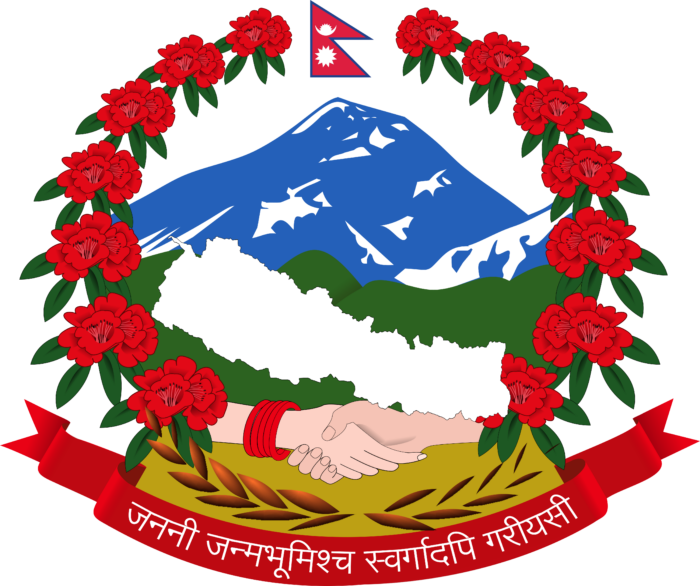About Nepal
Geography

Nepal is a landlocked country in South Asia, located between China and India. It has a total area of 147,181 square km and its topography is predominantly mountainous, with eight of the world's ten highest peaks, including Mount Everest, located within its borders. The country is divided into three main regions: the Himalayas in the north, the Hills in the centre, and the Terai in the south. The Himalayas, with elevations over 7,000 meters, are the source of several major rivers, including the Indus and the Ganges. The Hill region, with elevations ranging from 1,000 to 7,000 meters, is the country's agricultural and cultural heartland. The Terai, a low-lying region in the southern part of the country, is the country's fertile agricultural land.
Climate
KATHMANDU WEATHERNepal has a predominantly subtropical climate, with variations due to its diverse topography. The country experiences four main seasons: spring, summer (monsoon), autumn, and winter.
The country can be divided into three main climatic regions:
The Himalayan region, located at high elevations, has a cold and harsh alpine climate, with temperatures ranging from below freezing in the winter to around 10°C in the summer. The region receives very little rainfall and is covered in snow for much of the year.
The Hill region has a temperate climate, with temperatures ranging from 15°C to 25°C in the summer and 5°C to 10°C in the winter. This region receives moderate rainfall during the monsoon season and dry weather during the winter months.
In the Terai region, temperatures can reach up to 40°C in the summer and drop to around 10°C in the winter. The region experiences high humidity and heavy rainfall during the monsoon season.
Nepal experiences monsoon rains from June to September, with dry and cool weather from October to May.
Culture

Nepal has a rich and diverse culture shaped by its history, geography, and religious traditions. The majority of Nepali people follow Hinduism, but Buddhism, Islam, and Christianity are also practiced in the country.
Nepal has a strong tradition of art, music, and dance, with traditional forms such as classical dances, devotional songs, and musical performances featuring prominently in religious festivals and celebrations.
Nepalese cuisine is diverse, with staple foods including rice, lentils, and vegetables, and regional specialties varying greatly. Spices and herbs play a significant role in Nepali cooking, and traditional dishes often feature meat, such as chicken, goat, and buffalo.
The country is also famous for its festivals, which reflect its religious and cultural heritage. The Dashain festival, the biggest and most important festival in Nepal, celebrates the victory of good over evil and is marked by feasting and family gatherings. Other important festivals include the Tihar festival, which honours the relationship between humans and animals, and the Holi festival, which celebrates the arrival of spring.
Social norms and customs in Nepal are shaped by the country's traditional values and beliefs, with a strong emphasis on family, hospitality, and respect for elders. Hospitality is an integral part of Nepali culture, and guests are typically greeted with warm welcomes and offered food and drinks.
People

Nepal has a diverse population of approximately 29 million people, made up of numerous ethnic and linguistic groups. The country's official language is Nepali, but there are also many other languages spoken, including Maithili, Bhojpuri, and Tamang.
The majority of Nepali people are Hindu, with Buddhism, Islam, and Christianity also practiced in the country. Nepal is known for its rich cultural heritage, with traditional festivals, music, dance, and art playing an important role in daily life.
Nepal is predominantly an agrarian society, with agriculture being the main source of livelihood for a large portion of the population. However, tourism, hydropower, and handicrafts are also important industries.
The Nepalese people are known for their hospitality and friendliness, and social norms place a strong emphasis on family, community, and respect for elders. Women have traditionally played a subordinate role in Nepali society, but there have been significant advances in recent years towards gender equality, particularly in education and political representation.
Overall, the people of Nepal are proud of their rich cultural heritage and are working to preserve their traditions while also embracing modernity and economic development.
Wildlife

Nepal is home to a rich and diverse array of wildlife, due to its varied topography and location at the meeting point of the Palearctic and Indomalayan biogeographical regions.
The country is home to numerous species of mammals, including tigers, elephants, rhinoceroses, monkeys, and several species of deer and antelope. Nepal is also a crucial habitat for many species of birds, with over 850 species found in the country, including the highly endangered Bengal florican and the spiny babbler, which is found nowhere else in the world.
In addition to its terrestrial wildlife, Nepal also has a rich aquatic ecosystem, with numerous rivers and lakes that support a variety of fish and other aquatic species. The country is also home to several protected areas, including national parks and wildlife reserves, which provide crucial habitats for many of its threatened species.
Some of the notable protected areas in Nepal include the Chitwan National Park, which is home to tigers, rhinoceroses, and several species of deer and antelope, and the Sagarmatha National Park, which is located in the heart of the Himalayas and is home to several species of high-altitude birds and mammals.
Overall, Nepal's unique biodiversity and rich wildlife heritage play an important role in the country's ecology and cultural heritage, and are crucial for the livelihoods of many local communities.



